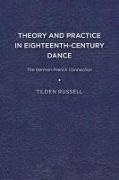This book is about the intersection of two evolving dance-historical realms—theory and practice—during the first two decades of the eighteenth century. France was the source of works on notation, choreography, and repertoire that dominated European dance practice until the 1780s. While these French inventions were welcomed and used in Germany, German dance writers responded by producing an important body of work on dance theory. This book examines consequences in Germany of this asymmetrical confrontation of dance perspectives.
List of contents
Acknowledgments
List of Abbreviations
Introduction
1. Anatomy of a Dedication: Gottfriend Taubert, His Dedicatee, and the Feuillet Analogy
2. Taubert in Danzig, and the German Reception of the Choregraphie
3. In Defence of Behr: Taubert's Contemporaries Revisited
4. Concordance of German Dance Treatises, 1703-1717
5. Feuillet, Taubert, Philipp Gumpenhueber, and the Spread of Beauchamps-Feuillet Notation
6. Dance Theory in Germany and England, 1703-1721
Postscript: Kleist's "Uber das Marionettentheater"
Bibliography
About the Author
About the author
Tilden Russell is professor emeritus of music at Southern Connecticut State University.
Summary
Examines consequences in Germany of this asymmetrical confrontation of dance perspectives. Between 1703 and 1717 in Germany, a coherent theory of dance was postulated that called itself dance theory, comprehended why it was a theory, and clearly, rationally distinguished itself from practice.

